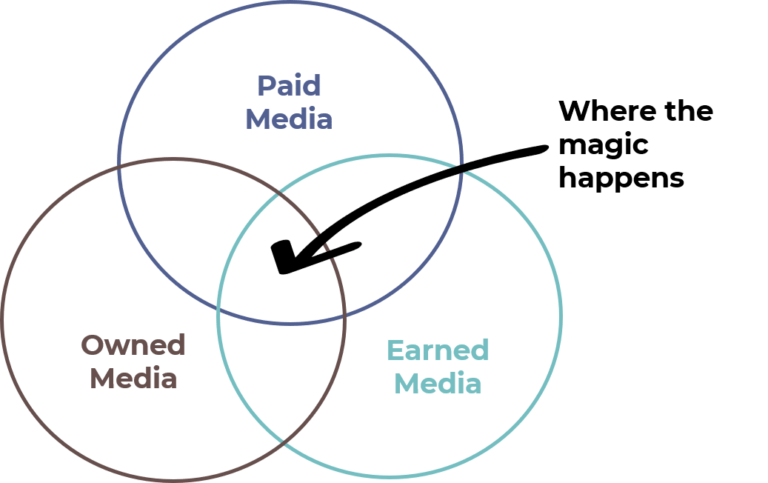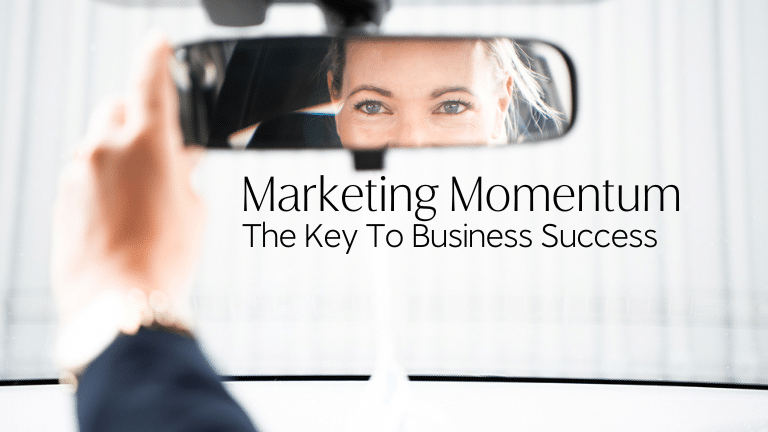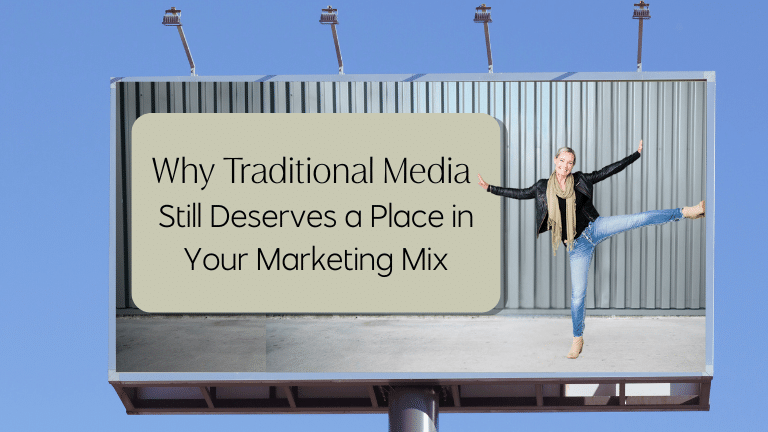3 things to consider before investing in paid media advertising

It can seem daunting as a small business owner when it comes to spending money on advertising to attract customers for your business if you don’t have a clear understanding of how to measure the return on your investment (ROI)
As every business is different, your results are going to be highly dependent on the parameters you set – i.e. the investment level, how broadly you go on your audience targeting and a number of external market factors such as other competitor activity, current state of the economy, time or seasonal trends for your business that can influence your customers behaviour and how they respond to your marketing efforts.
Unfortunately, there is no magic formula or silver bullet. You will need to take a test, learn and refine approach to what you do in paid media advertising. And you will have to be patient. The biggest mistake I see for business owners when they invest into paid advertising is they expect to see immediate or massive results and panic if it doesn’t happen, chopping and changing the campaign set up too quickly before it has a chance top gather any meaningful data or insight and therefore diluting the results of their campaign.
So, what are the most important things to consider when you are thinking about a paid media campaign for promoting your business?
1. DON’T treat paid media as a silo in your marketing efforts!
Paid advertising activity should not be considered separate to everything else you are doing, you need to think about all of the content and ‘stuff’ (messages) you are putting out into the world as if it’s an ecosystem. The strongest results for your business communications will come from building out a well defined communications strategy that considers how your Paid, Owned and Earned activity will come together to be in the right place, at the right time with the right message. Done well, these channels will converge and generate the sweet spot in the storytelling of your business!

So, you may be wondering what do I mean by Paid, Owned and Earned Media?
Paid media is probably the most easily understood. This is essentially ‘paid for’ advertising space or placement across media channels that sell advertising space such as Television, Digital, Social, Out of Home or Radio etc. Paid media tends to play a role in in the shorter term to drive awareness of your products or services because in essence, you are pushing out a message (like a broadcast) to get noticed by your defined audience. In digital channels, over time as you begin to build audience insight and data from your campaign activity you will have the ability to develop more conversion based campaigns.
Owned media consists of the content you create and publish on a channel you own. This includes your website, blog, your email list or customer database, any eBooks and white papers you publish, and the content you distribute organically on your social media channels (which beware you don’t actually own simply the content you post on them!) This is usually the basis of a content strategy and plays a role over the longer term through consistently showing up and being present with your content to generate authority, authenticity and establishment of your credentials amongst your ideal audience.
Earned media is typically defined as the unpaid coverage/mention of you or your brand or organization by third-party entities such as media publications, customers, or influencers – i.e. its word of mouth. It is often the result of a well-planned paid and owned media channel strategy coming together and is hugely valuable in building trust and credibility because it is someone other than you advocating you or your products to new customers!
2. Be clear on the role that the paid activity is playing, there are a number of factors that will influence the appropriate channels, platforms and placements!
Are you trying to drive awareness, consideration or conversion? Understanding where your audience are in their decision-making journey is a critical factor in how you might go about implementing your paid media activity. If awareness is your key objective then you will likely find you need to target very broadly to get the scale required whereas a consideration or conversion goal will usually be a lot more targeted in terms of the channels and target audience you define.
Now consider that it takes, on average, 9-15 touchpoints for a consumer to take an action and the average consumer is exposed to a minimum 3,000 messages per day (yes, per day) this brings into stark contrast why you want to be considering the role that every channel plays in moving your ideal customers along the decision making pathway when selecting where to place your advertising $!
Understanding which media channels will best reach your audience efficiently and effectively is crucial. Whilst Meta and Google tend to be the most efficient for small business advertising, there have been big changes in the way we can access media buying on digital format billboards, radio channels, podcasts and video on demand platforms that could be much more effective in reaching your audience.
This is simply to demonstrate there is no ‘one size fits all’ and there are a number of influencing factors in crafting a well thought out paid media plan that can generate a result! This is were the value in working with a skilled media strategist and buyer can save you some costly mistakes!
3. Set initial benchmarks so you can measure your ROI results and learn how to optimise what is working well, or test a new approach
One of the attractive qualities of digital advertising for small businesses is the ability to more accurately track and measure results through to your sales or contact page as opposed to traditional media channels where its harder to see the effects of your advertising. The biggest trap I see though is that when it comes to reviewing performance, many digital channels and platforms are based on the ‘last click’ model of attribution success rather than taking into account how every exposure to a message may play a part in the overall decision making journey (remember that 9-15 touchpoint average I mentioned earlier….?) Without getting too technical here, it is worth it to get some advice on understanding attribution models, how to set these up in Google Analytics and what tracking needs to be implemented for the ads you are running, especially if you are going to be spending heavily or across a number of digital platforms. On another note, if you don’t have any analytics tracking set up be it Google Analytics or another tool its high time you did as it is critical to understand and connect the dots on how users are coming into your website and what they are doing when they get there..
Depending on the type of business, your communication and paid media objectives, how much competitor activity there is in the market, seasonality and the good old ‘algorithms’ you have no doubt heard about can influence the results of your paid media campaign. Its important to keep all of these factors in mind when
Determing your businesses key metrics of success will once again depend on your objectives, but at a very basic level you need to be considering things like the click thru rate (CTR), cost per click (CPC), cost per thousand impressions (CPM) and cost per acquisition (CPA) rather than vanity metrics such as social media ‘likes’. This is again where a skilled media strategist/buyer can help you to determine what is appropriate to measure based on your type of business.
Phew! So there you have the three key considerations before you decide to invest in paid media advertising. This is not meant to confuse you but to demonstrate why it’s necessary to ensure you have a solid strategy in place and a clear understanding of how your paid media activity fits together within your overall marketing mix to achieve results.
If you would like some help with developing your paid media strategy and setting clear benchmarks and measures for success for your campaigns in 2025, we’d love to help – book a time with us to chat!
There are a number of flexible ways to work with us – visit our work with us page to learn more






